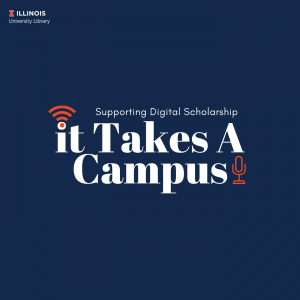This latest installment of our series of interviews with Scholarly Commons experts and affiliates features Wenjie Wang, Geographic Information Science Specialist at the Scholarly Commons. Welcome, Wenjie!
What is your background and work experience?
I worked as a Data Specialist at the Map and Geographic Information Center (MAGIC) in the University of Connecticut for five years. MAGIC is located within the Library’s digital scholarship lab, Greenhouse Studios, I worked alongside digital humanities and digital scholarship colleagues with a focus on utilizing geospatial data, GIS applications, and spatial data analysis techniques to contribute to projects within Greenhouse Studios as well as to support researchers at MAGIC. I have had the opportunity of working within diverse environments and my experiences have been enriched by working with students, faculty, staff, and the community from diverse backgrounds and experiences.
What led you to be a GIS specialist?
In my former role as a teaching assistant for Geography courses, I realize that introducing GIS tools and methods to students in the geography class is always a challenge, as students have very different educational and technological backgrounds. Many students lack the core comprehension of geospatial concepts, have not used or even heard of GIS software before. With MAGIC receiving over 5 million online users a year, I truly understand how important GIS could be in students’ research. I think my interdisciplinary interests can put me in a strong position to bridge conversations between individuals from diverse backgrounds and I can help them use GIS as a tool in their research.
What are your favorite projects you’ve worked on?
I created maps to provide a quick and user-friendly way for communities to reflect on the differences in child outcomes across the local communities in Connecticut. My knowledge of GIS was utilized to analyze data and create maps to help match proven school readiness solutions with unique needs faced by communities for the organization. This is my first big project and it is very meaningful. I learned a lot from this project, so it is my favorite project so far.
What are some of your favorite resources that you would recommend to researchers?
I would like to recommend two data resources: IPUMS and TIGER/Line Shapefiles. IPUMS provides census and survey data, including tabular U.S. Census data, historical and contemporary U.S. health survey data, Integrated data on population and the environment, and much more. TIGER/Line shapefiles contain features such as roads, hydrographic features and boundaries. These resources are very useful for researchers who just start to use GIS since they are free and easy to handle.
If you could recommend one book or resource to researchers who do not have GIS background, what would you recommend?
Because many researchers just want to use GIS as a tool in their research field and they don’t have plenty of time to learn GIS, I would like to recommend Esri Training Web Courses. The courses are free and short. Through these entry level courses, researchers can easily learn what is GIS, how a GIS works, how to analyze and manage GIS data, and so on. After that, they will be able to know what kind of GIS technologies and data is useful in their research. And then they can focus on learning these parts.
What is the one thing you would want people to know about your field?
I would like to say GIS is not just making maps. GIS can help us make detailed and informative maps, but GIS can do much more than this. The most important part of GIS is its ability to help us think spatially and answer our questions. I hope I will be able to help researchers to understand GIS can be used as a tool in both problem solving and decision-making processes in their research.
Interested in contacting Wenjie? You can email him at wenjiew@illinois.edu , or set up a consultation request through the Scholarly Commons website.




